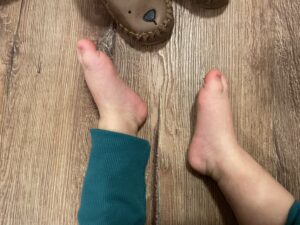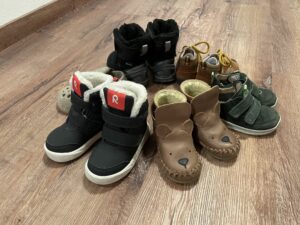"Doctor, what kind of shoes should we wear? Can I give my daughter shoes after a sibling? And what do you think about barefoot shoes?” These are frequent questions that doctors in orthopedic clinics hear. But can they be answered simply? On the topic of healthy footwear for children, we talked with MUDr. Eva Němejcová from the Department of Pediatric and Adult Orthopedics and Traumatology of the 2nd Faculty of Medicine of the University of Warsaw and the Motol Medical University.
Doctor, are special shoes necessary for children?
First of all, we need to look at how the foot looks like for which we want to choose shoes. The most important thing is whether the child's foot is healthy. In other words, does he have a congenital defect that would require consideration of special shoes, orthopedic insoles or at least regimen measures. Not every foot can handle any type of footwear. And not every shoe is suitable even for a healthy foot, let alone for a foot that is not quite right. If you are in doubt as to whether or not your child's foot is fine, be sure to consult an orthopedist, physiotherapist or rehabilitation doctor.
How to choose the first boots?
Sometimes the desperation of parents in choosing the first shoes is really great. It is difficult to find your way around the plethora of different shoe shapes, sole heights and even shaped insoles. Sometimes a simple tip can help. Observe your child. So far it has been walking around the furniture at home, maybe taking a few steps, all without shoes or in soft slippers. The leg could thus function freely. The moment you put on his shoes, what happens? Do they walk the same way? Or is something different, stumbling, dissatisfied? Nothing should happen properly. The way of walking should not change, the child should be happy and the shoes should not hinder him in any way.
How to measure a foot correctly?
The correct measurement of the feet is essential when choosing a shoe. It is always necessary to measure both feet. The difference in length and width can sometimes be many millimeters compared to the other leg. And yes, it is necessary to measure the width of the feet, although this is not a common practice. In order for the foot to function properly, it must have enough space in the shoe, not only in length, but also in width. When walking, the leg works and increases its length and width by several millimeters. A suitable oversize for children's shoes is even 10-12 mm. For the width, an excess of approx. 1 mm on each side is sufficient. When choosing shoes, I recommend tracing a standing child's foot on paper. In this way, you can see what the shape of the foot looks like under load and which shoes you should choose. You can measure the length and width of your leg right away. The foot should never conform to the shoe. Always choose a shoe that fits the foot properly and does not oppress it in any place. But be careful, the child usually won't tell you this fact, so you have to follow the shape of the foot and its dimensions.
How to choose the shape and slope of the shoe?
Many of the conventional shoes have the front part of the shoe molded into a toe. Few children's feet are so narrow that the toes will not be crushed in such a shoe. If you give a child a narrow shoe, the foot will not function properly. The toes will not extend properly when the foot kicks off, and the big toe will not fulfill its supporting function. In addition, long-term wearing of narrow shoes causes foot deformities, which are then seen in the adult population. So the shoes must not only be long enough, but also wide enough. The sole should be flat, without a wedge or even a heel. Such an elevation leads to a change in the center of gravity of the body, a change in the footing, a shortening of the Achilles tendon, and subsequently to a change in the inclination of the pelvis. If the shoe is raised even in the area of the toe, then there is an incorrect work of the toes and their limited active reflection. The flexibility of the sole is also important. If it is stiff or too thick, then it does not allow the foot to make contact with the ground and it cannot react to the surface on which it moves. This again worsens the work of the legs, and in addition increases the risk of injury.
Should we wear ankle boots?
It often happens that parents come with the information that the shoes should be high, firm, so that the ankles do not break inwards. However, if you enclose your foot in rigid ankle boots, there will be no natural strengthening of the muscles and tendons that then maintain the stability of the ankles. The situation with the legs is different, where due to some defect the position of the ankles is seriously disturbed. But this already requires an individual approach and evaluation for a specific child.
Can we buy shoes with molded insoles as a precaution?
In the buyer's mind, the shaped insole is supposed to ensure support and shaping of the arch and thus the correct and healthy position of the feet. How simple it would be if we could give all patients orthopedic insoles or shoes with a shaped insole and thus ensure proper foot development. But the muscles of the artificially supported arch of the foot are not actively used and weaken. So the effect is quite the opposite. The leg is passively supported but not actively working because it doesn't have to. Naturally, it does not strengthen the muscles and tendons that make up the arch. When we support the foot with an insole, we improve its position in the shoe and thus we can achieve pain relief. But it will never happen that the leg will function better or perhaps even properly and that its position will not deteriorate further.
Text: MUDr. Eva Nemejcová
Photo: Lucie Černá